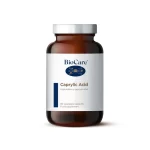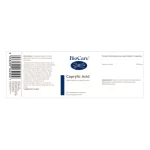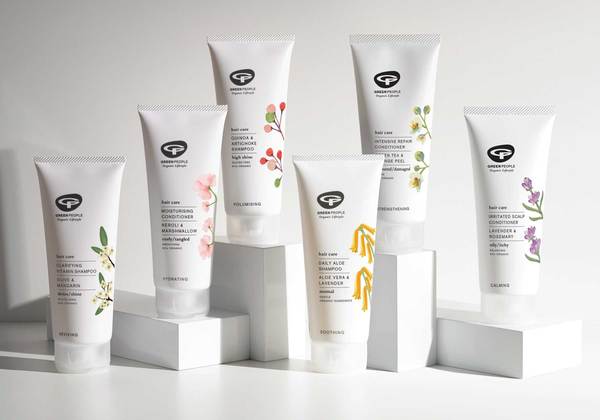



Caprylic Acid 90Capsules BioCare
£35.79 Original price was: £35.79.£28.27Current price is: £28.27.
Caprylic Acid
Caprylic acid, also known as octanoic acid, is a medium-chain fatty acid (MCFA) with eight carbon atoms. It is a saturated fatty acid naturally present in certain foods and also commonly used in various industrial and medical applications. Here’s some information about caprylic acid:
- Dietary Sources: Caprylec acid can be found in small amounts in certain foods, including coconut oil, palm oil, and cow’s milk. Coconut oil is a particularly rich source of caprylic acid, containing about 6-10% of this fatty acid.
- Industrial Uses: Caprylec acid is used in the production of esters, perfumes, and soaps due to its pleasant odor. It is also utilized as a food preservative and flavoring agent, providing a characteristic buttery taste.
- Antimicrobial Properties: Caprylic exhibits antimicrobial properties, especially against certain types of fungi and bacteria. It can disrupt the cell membranes of these microorganisms, inhibiting their growth and potentially aiding in the treatment of various infections.
- Nutritional and Health Supplement: Caprylic is sometimes used as a nutritional supplement or health aid. It is believed to support digestive health by promoting a healthy balance of microorganisms in the gut. It is also sometimes used in ketogenic diets as a source of quick energy.
- Candida Overgrowth: Caprylic is often associated with the treatment of Candida overgrowth, a condition caused by an overgrowth of the fungus Candida in the body. Some research suggests that caprylic acid may have antifungal properties that could help reduce Candida levels. However, further research is needed to fully understand its effectiveness.
- Side Effects and Precautions: While caprylic acid is generally considered safe when consumed in moderate amounts from food sources, supplementation or high-dose use may cause gastrointestinal disturbances such as diarrhea or stomach discomfort. It’s important to follow recommended dosages and consult with a healthcare professional before starting any supplementation.
It’s worth noting that while caprylic is found in certain foods, it is not typically consumed in high amounts through a regular diet. If you are considering caprylic acid supplements or using it for specific health concerns, it is advisable to consult with a healthcare professional for guidance on proper dosage and usage based on your individual needs and health condition.
Caprylic Acid Benefits
Caprylic corrosive is a kind of useful immerse unsaturated fat that has antibacterial, antiviral, antifungal and calming properties.
It’s been connected to anticipation of urinary lot contaminations, bladder diseases, Candida, physically sent sicknesses, oral contaminations like gum disease and numerous different circumstances.
Caprylic corrosive is an unsaturated fat that is found normally in coconut and human milk. This soaked unsaturated fat, otherwise called octanoic corrosive, is likewise present in margarine and palm oil. Find out about the health benefits of caprylic acid and capric acid.
- Mycopryl is buffer with calcium and magnesium
- It is not water-soluble like some caprylic acid products such as potassium and zinc caprylate
Recommended Intake
Product Information per Daily Intake
| INGREDIENT | AMOUNT | PROVIDING | % EC NRV |
|---|---|---|---|
| Caprylic Acid | 2040mg |
|
















Reviews
There are no reviews yet.